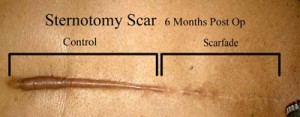February is Heart Month. This brings to mind the topic of heart surgery, which is a way to treat problems such as coronary heart disease and heart failure. Heart surgery is also used for transplants and repairing heart valves. Much preparation is done for heart surgery, and it varies slightly depending on what type.
According to the National Heart Lung and Blood Institute, the most common type of surgery is coronary artery bypass grafting (CABG), which is commonly referred to as simply a heart bypass. During surgery, an incision is made down the center of the chest. The rib cage and breastbone are cut, giving the surgeon access. This is called a sternotomy. When repairs are complete, the bone is then wired back together and the incision closed.

After surgery, the patient usually has a recovery time of six to 12 weeks, depending on the exact procedure. The incision area on the chest eventually develops a scar as the skin heals. Incisions are usually about six to eight inches long. For some men, chest hair may grow back on either side, covering the scar and making it less noticeable. Women don’t have that advantage, and it may be visible when wearing certain types of clothing. Sternotomy scars usually heal to a thin, visible white line. Silicone scar gel, such as Scarfade, is used to reduce the visibility.
It’s not uncommon for sternotomy scars to heal abnormally, however. According to a study recently published by the National Center for Biotechnology Information, one out of 10 sternotomy patients has hypertrophic scarring. These types of scars have discoloration and unusual contours. They are often red, raised and itchy. There are different types of scar treatment available for hypertrophic scars, including pulsed dye laser (PDL), and scar revision surgery. Hypertrophic scars are usually smaller after these treatments, but are still visible and sometimes grow back. Scar reduction cream is useful in treating these scars. The gel form of Scarfade is applied on top of the hypertrophic sternotomy scar to help it become less visible and eventually less itchy. Silicone-based scar cream can be used instead of or in addition to laser treatments or scar reduction surgery. It is available without a prescription, but should be used within one year of surgery for best results.
